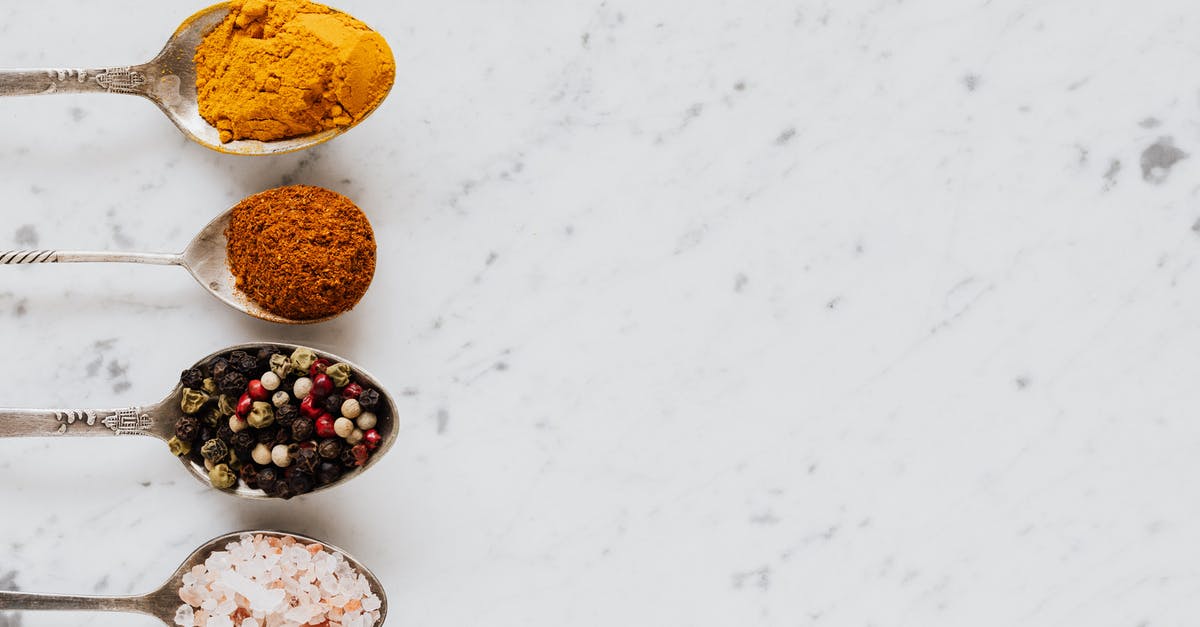How to remove commercial seasoning from skillet?

We bought a new skillet that was "pre-seasoned" a few years ago...but haven't really used it once yet because that seasoning is basically some black gunk that comes off into the food that's cooked in it. I don't know what this seasoning is - hopefully a food-grade oil that's been cooked into it like the usual seasoning process would involve, but I don't know - but regardless, I don't want flakes of charred...whatever...coming off in food I cook in it.
I know thoroughly washing it is a no-no (even though I desperately want to wash whatever that is off). Any advice on how I can get it clean and usable?
Best Answer
How to remove old seasoning and start over from scratch?
Very few cases actually require a full stripping of cast iron and restarting your seasoning from scratch. If you ruined your seasoning somehow, it can usually just be fixed by scrubbing and baking on a fresh layer of oil or two. However here are a few real reasons:
1) The pan is new, and you don't trust the manufacturer's pre-seasoning for whatever reason, is it really food grade, is it clean is it toxic, is it...whatever... 2) you got your cast iron from an antique store or other source where the seasoning is just unknown or otherwise not trustworthy (IOW, is that black paint?), same as #1, just not a brand new pan. 3) you are a purist and want to manage every layer of the seasoning from how the iron is treated prior to being coated with oil, or which choice of oil and how many coats to season with before the pan goes into production.
To begin, first you really want to scrub the heck out of your pan to break off loose dirt, burned food and anything that will just come free with a scotch brite. The next step does the real cleaning, but scrubbing off whatever you can first will reduce the amount of smell and smoke. if you have a number of pans you want to strip, it might be best to have a few of them ready to go at once to save your time. This is a time consuming process.
After you have scrubbed your pans clean, put them in your oven, and run the the oven through a clean cycel. At minimum thise should be two hours, but many ovens let you run it 2, 4, 6 or 8 hours. Depending on how hot your own gets during cleaning, 2 hours may not be enough, I personally run a 4 or 6 hour cleaning cycle. Do NOT leave your home during an oven cleaning cycle. The temperature of your oven will exceed 800 Degreed F. These temps are more than twice as hot as ordinary cooking temps, and you should never leave your house with the oven on anyway, but the cleaning cycle should absolutely never be left unattended.
The heat will burn everything off of your pan, once the oven has had a chance to cool off and you are able to look inside you will see your cast iron has turned a much brighter but dull grey. This is the natural color of iron when it is bare. As the iron cools, it will start to turn orange. That is caused from the iron oxidizing a fine layer of rust on it's surface, a process that is accelerated by the iron being so hot and exposed to cool air as it cools.
Once the pan is cool enough to pick up with your base hands, we are going to return to the sink, and we are going to scrub the rust away with a new clean scotch brite pad. Turn the oven on and set to 385 degrees F. Becareful, in contrast to seasoned cast iron, bare cast iron is VERY abrasive, and you can skin your knuckles if you aren't careful. Rinse it very well again, toss back into the oven and let the heat drive away the moisture. This time, because you aren't leaving the pan in their to get to full heat, it won't reoxidize so quickly. While it's hot, grab a clean unused dishtowel fresh from your laundry stack, and pickup the pan and put on your stove. Pour about a tablespoon or two of your favorite seasoning oil or fat. Despite what the science says, it doesn;t matter so much which one you choose. This is not because there is no difference. There IS a big difference, but from a practical standpoint, unless you are super super careful, you are going to ruin your seasoning from time to time and will have to fix it. So going with the super expensive flax seed oil really doesn't make any difference from a practicality point of view. I prefer Peanut Oil. It has a high smoke point, which means I can bake it on longer/hotter, making it more durable than other lower smoke point oils. Flaxseed oil is actually the most durable during the way the polymers develop along with the smoking, but again it doesn't matter for practical purposes because you will ruin it now and again. So I use a durable high smoke point oil that's cheaper. Peanut Oil.
With a paper towel folded over a few times until it's 2 inches x 2 inches, start smoothing that oil all around the inside of the pan. Once the paper towel has taken up all the oil and spread it around the inside, flip the pan over and coat the entire outside of the pan. Take special care to get oil into all the cracks, and dimples, and rings, and especially inside the eye of the handle. Get under and inside the front guard that lets you stack your pans. You want to make sure there is not one tiny iota of the pan left dry. Don't worry if the paper towel starts to break apart and leave lint behind. It makes no difference whatsoever.
Done? Good. Now grab a fresh dry paper towel and remove all the oil, make it so the metal looks dry. If you touch it and you can feel the oil, then it's too much. Get it all off.
Once that's done, place a large cookie sheet on the bottom rack of your oven to catch drips...do not use aluminum foil as is often recommended, you'll regret that decision the next time you open the oven door when you are looking at half melted aluminum stuck to the bottom of you oven. Ok, so cookie sheet in place? Great. Place the cast iron pan on the top rack of your oven UPSIDE DOWN. This lets any errant drops of oil that will collect and coelesce together drip out of the pan rather than pooling in the bottom of it, which makes a stick gummy mess. Upside down right? Check!
Let your pan bake for 1 hour. Set the timer. After an hour, check it...It might be dried, it might not. If it's not completely dry, put it in for another 30 minutes. Take note of how long it takes, because that's how long you are going to bake it for again for the next steps, and again in the future if you ever have to repeat this process.
The pan when dried should look a little darker, but it will look like a yucky olive green. That's ok. We aren't done yet.
Put another layer of oil on your pan, being just as careful as before. Remove the oil with a paper towel, bake it...this time for as long as the pan needed for the first coat.
Do NOT be tempted to rush this by leaving extra oil on the pan. This does NOT work. It makes a gummy sticky mess, and even if you do get it to harden, it will chip off the pan at some point ruining your carefully developed seasoning just as it's starting to look nice and baby butt smooth.
So, repeat the above process at least 4 times, but as many as 9 times depending on how developed you want your initial seasoning to be. After 9 times, you reach the point of deminishing returns and it won't really get any better without real food being cooked in the pan and without it being scrubbed down gently from time to time.
Once your initial seasoning is complete, the pan should look really dark grey, but it won't become that jet black without time. There is no real way around this. Smooth jet black is the sign of great seasoning, but it can only be accomplished with time at this point. But here you have your starting point for getting the seasoning you want on your cast iron pots and pans.
Care from now on should be to clean the pan after each use, if it wipes out with a paper towel, that should be all you need to do. If it needs some help, use regular dish soap, and a green scotchbrite pad, and scrub gently...This doesn't hurt your seasoning. In fact it helps, because the scrubby will help smooth the seasoning down. After you rinse it out really well, return the pan to the stove and let it heat dry (don't burn it), just let it dry the water off. Once the water is dry, take a tablespoon of peanut oil, and push it around with a clean paper towel just like before, after wiping the oil on, wipe the oil off again and let the oil dry on the stove. As soon as the oil starts to turn into speckles (little bumps) on the bottom. Wipe it down with a clean towel once again, to knock those down and remove the pan from the heat.
You are done...keep it clean like this and your seasoning will become jet jet black, remain baby bottom smooth, non-stick, and be the greatest stove top cooking surface you own
Pictures about "How to remove commercial seasoning from skillet?"



How do you clean a branded seasoned cast iron skillet?
Gently scrub the pan using mild dish soap, hot water, and a non-abrasive sponge (such as a Dobie sponge or the soft side of a Scotch-Brite sponge) or a scrub brush. Rinse it clean and then dry it completely with a dish towel.How do you remove factory seasoning from cast iron?
To strip your cast iron pans in the oven, set them upside down on the middle rack, close the door and run the self-cleaning setting. Allow your pans to cool in the oven, then remove and wash with hot soapy water and, if needed, some steel wool to remove any remaining seasoning, rust or flakes.How do you clean a skillet after seasoning?
Avoid using the dishwasher, soap, or steel wool, as these may strip the pan's seasoning. Scrub off stuck-on bits: To remove stuck-on food, scrub the pan with a paste of coarse kosher salt and water. Then rinse or wipe with a paper towel. Stubborn food residue may also be loosened by boiling water in the pan.How do you remove failed seasoning from cast iron?
Put the pan in the oven at 200F for 10 mins. Take out and rub down really well. Now wipe it all off. Think its all.The Easy Guide On Seasoning and Restoring Cast Iron
More answers regarding how to remove commercial seasoning from skillet?
Answer 2
If you don't have a self cleaning cycle on your oven, this video is a great step by step tutorial.
https://www.youtube.com/watch?v=2Pvf0m9jTeE&index=1&t=0s&list=LLJlhAyKtlIQ1OwXnssdJeQw
If you do have a self cleaning feature, this same person has an equally helpful tutorial.
https://www.youtube.com/watch?v=dcSb07xpyKM&index=19&t=229s&list=LLJlhAyKtlIQ1OwXnssdJeQw
Sources: Stack Exchange - This article follows the attribution requirements of Stack Exchange and is licensed under CC BY-SA 3.0.
Images: Pok Rie, Kelly L, Karolina Grabowska, ROMAN ODINTSOV
